English
‘English has a pre-eminent place in education and in society. A high quality education in English will teach pupils to speak and write fluently so that they can communicate their ideas and emotions to others and through their reading and listening others can communicate with them’ Department for Education (2014) National Curriculum: English programmes of study
| Our English section has pages with further information on more specific areas. Please click the links below for more detail. | ||
 |
 |
 |
| Reading | Writing | Read, Write, Inc (RWI) |
The curriculum has been developed by using and widening the National Curriculum in order to produce a broad and balanced
progressive, sequential long term plan with consideration of the individual needs of every child in our school community. Specialist
teaching supports are evident throughout to ensure every child has the best possible chances to reach their maximum potential.
Intent
At Benton Dene School we have developed a quality Literacy (English) curriculum which has been developed to enhance our
children’s interest and enjoyment of reading, writing, speaking and listening. Our curriculum follows a clear pathway of progression
and is coherently planned and sequenced as children progress through our primary years. Our English curriculum is broad and
balanced for all pupils offering a Quality First Teaching (QFT) approach that is highly integral to raise achievement for all of our
children. It is our intention to ensure that, by the end of their primary education, all children have been given the best possible
opportunities to develop and learn. As they develop through the school English curriculum, it is our intention that children will be
challenged further by developing their creative writing skills and to be able to read fluently with confidence in any subject in our
school curriculum, preparing them for their forthcoming secondary education.
The aim is to provide a personalised, broad, and balanced, challenging but supportive English Curriculum that develops all of our
children’s abilities in reading, writing, listening and speaking.
Key goals include:
● To foster an enjoyment of English amongst pupils, and a recognition of its value across the school curriculum and their wider
community.
● To give all of our pupils the best possible opportunities to enable them to read confidently, fluently, accurately and with
understanding. We aim to foster an interest in words and their meanings and to gain an appreciation of books from a variety
of genres and develop the habit of reading widely and often, for both pleasure and information
● To embed a variety of communication aids to help to develop children’s vocabulary such as symbols, photographs, AAC
devices, storyboards, big mack switches and communication books
● To acquire a wide vocabulary, an understanding of grammar and knowledge of linguistic conventions for reading, writing and
spoken language and to appreciate our rich and varied literary heritage
● To be able to support understanding of key vocabulary by using interventions such as colourful semantics with the intent to
prepare learning for children in the next key stage.
● To ensure pupils are taught to practise oral composition and vocabulary which is built through purposeful, explicit instruction
with many opportunities to develop drama and role play. Leading on to using discussion in order to learn; they should be able
to elaborate and explain clearly their understanding and ideas. Our children will develop confidence in the art of speaking and
listening, making formal presentations, demonstrating to others and participating in debate
● To write clearly, accurately and coherently, adapting their language and style for a range of contexts, purposes and audiences
● To provide a stimulating adapted Talk4Writing curriculum and school environment which places the development of speaking
and listening, reading and writing skills at its heart. Providing meaningful contexts and quality texts as the inspiration for
writing.
● To ensure the teaching of English is effectively planned, progressive and responsive to learners’ needs, through: planning the
teaching of both writing composition and spelling, punctuation and grammar (SPAG) in conjunction with the National
Curriculum which is reflected in our Benton Dene School English Curriculum Overview.
● To ensure that our curriculum is appropriate for every learner, meeting individual needs and supporting
Structure -The scheme of work has been developed by using key National Curriculum objectives, which have been broken down into small steps and supports added to meet the needs of our children.
What does English look like at Benton Dene?
At Benton Dene we focus on each child’s individual starting points, adapting the English learning to meet their individual needs.
Therefore, children will access their English learning in a variety of ways and we employ a toolkit of methods and interventions to support our children. However all children at Benton Dene will receive the following English specific lessons each week;
● Daily morning work - reading 1:1 with an adult and completing handwriting.
● 3x English lessons (Talk 4 Writing) - these are book based lessons, developing their individual English curriculum needs.
● 1x Comprehension lesson - utilising a scheme to develop comprehension skills and understanding of what they are
seeing/reading.
● 1x Handwriting lesson - utilising a handwriting scheme to develop handwriting skills. For our younger children, this may be a
fine motor skills programme such as Squiggle while you Wiggle.
● Daily ‘reading for pleasure' time. All classes share a story each day.
● Phonics teaching - Read, Write, Inc is taught 5 times a week. Some children will proceed to the Spelling Programme, while
our younger children and children working in Pre Key Stage Standards may access Launchpad for Literacy and/or
Pre-Phonics learning.
More information about which interventions and schemes your child(ren) are working on, can be found on their Pupil Passport or by asking a member of their class team and will be available in the curriculum folder.
Why this - We believe that a quality English curriculum will foster and develop children’s love of reading, writing, discussion, debate
which will help to prepare them for adulthood. In English, we provide our children with relevant and real life opportunities that will
prepare them for the next stage of education and further into adulthood. We aim to inspire an appreciation of the written word through a range of different genres e.g. songs, poems, articles, letters, play scripts, novels and nonfiction texts, and to develop students socially, emotionally, culturally, intellectually and spiritually through a range of high quality and diverse materials. The curriculum has been designed to address specific needs and provide an inclusive environment where every student can flourish.
Impact
As a result we have a community of confident, enthusiastic readers and writers who enjoy showcasing their developing literacy
knowledge and skills. They are confident to take risks in their reading and writing, and love to discuss and share their ideas. Their
enjoyment of reading is fully preparing them for the next steps in their education as they transition into secondary provision.
We use Cued Articulation to support our pupils. It is a set of hand cues for teaching the individual sounds in a word. The hand movements are logical – each hand movement represents one sound and the cue gives clues as to how and where the sound is produced.
It is not a sign language where the whole word is signed – but Cued Articulation can be used alongside sign language. Cued Articulation should not be confused with ‘Cued Speech’.
Here are some examples of our pupils' work and the progression they make.























